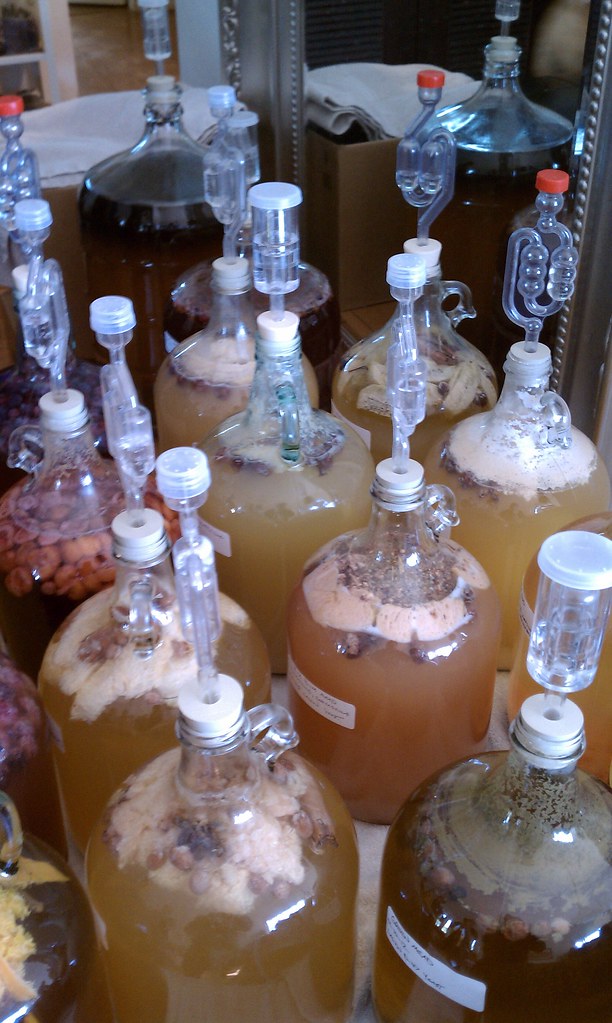 |
Production at the
Brewfooery Meadworks |
The other week I got the opportunity to visit my friend Chad's home brewery (known internationally as the Brewfooery). I've been meaning to get over to Walnut to visit him for quite a while and I was determined to make it happen. The impetus for this trip was to take part in a mead demo he was hosting. I'd been wanting to make a mead but I was mentally holding myself back over the cost of a 5 gallon batch and personal hang ups about only making a signal gallon. Chad's demo was the perfect opportunity to get over myself and just do it.
I've known Chad for a little over a year now and the thing that has always impressed me is his open approach and creativity to fermented beverages. It seems like nothing is off limits as an ingredient (palm sugar and kiefer limes are among the more famous Brewfooery ingredients) to Chad which is help open the possibilities to anyone who has tried his beers.
Chad started brewing several years ago but took a long period off and started back up in the fall of 2010 and go back in running. I swear it seemed like at times he was brewing twice a week or more and soon started hosting brewing demos for friends and coworkers. Soon their were several members of the Brewfooery School of Homebrewing turning out their own unique beers.
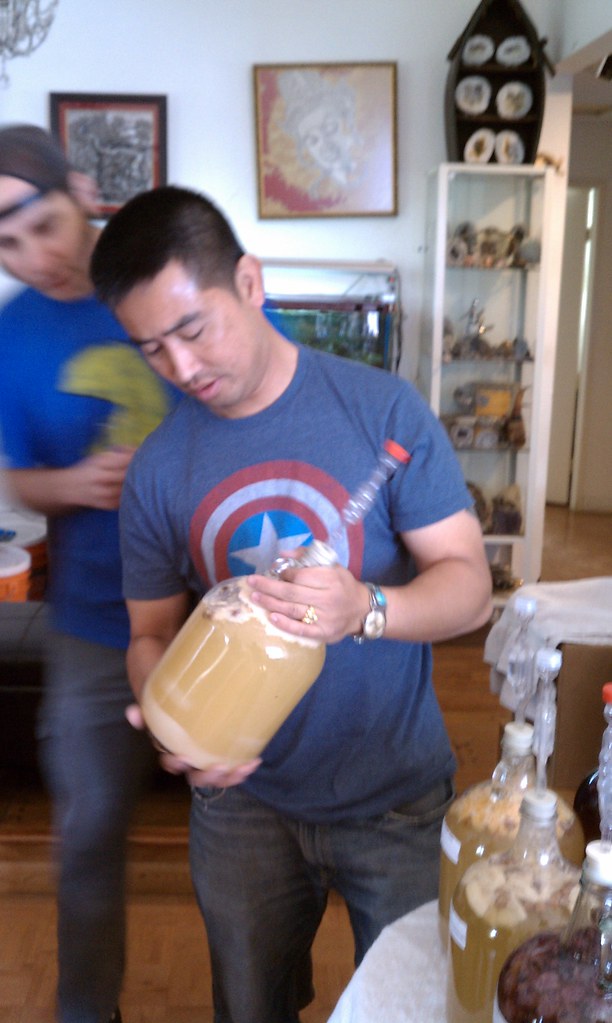 |
The MeAD Scientist showing off
one of his many in production meads |
About a year ago Chad started playing around with honey adding large quanities to his beer. This lead him to brew a bunch of braggots (sort of a cross between a beer and a mead) along with some dry hopped meads.
On the day I visited him he had 16 1 gallon meads going with a wonderful spectrum of ingredients. Most of Chad's meads are variations on a very classic and straight forward mead recipe known as Joe's Ancient Orange Mead. I've had several different versions of this one and it remains a favorite recipe for meads.
I decided that I would forgo my current style of recipe development (lots of reading and research) and embrace a more free flow model similar to my approach with dry hopping some of my early beers. I'd had a few cans of Oregon boysenberry pie filling sitting in my garage for a while that I had originally bought to use in a beer I never made. Chad provided a multitude of other spices, juices and fruits to add.
I started my mead by adding 3 lbs of warmed honey to a gallon jug. Next I opened my two cans of boysenberries, that had been hanging out in sanitizer, with a sanitized can opener and added the contents to the jug. After smelling several of the spices I opted to use a cinnamon stick, a teaspoon of Indian Sarsaparilla, about 25 raisins for nutrients and a single clove. I then added what looked like about a cup of cranberry-raspberry juice and topped it off with water. I added some mead nutrient, the yeast (Lalvin D-47) and shook the jug to aerate. Done in less then 30 minutes!
Looking at an online recipe builder at
Got Mead I'm looking at a starting gravity of around 1.108. It should be about 14% ABV when it's done in 6 months or so.
Cheers
-SNB
Pictures
 |
Look at the crazy surface, looks
like a lunar landscape |
 |
| Really clearing up |
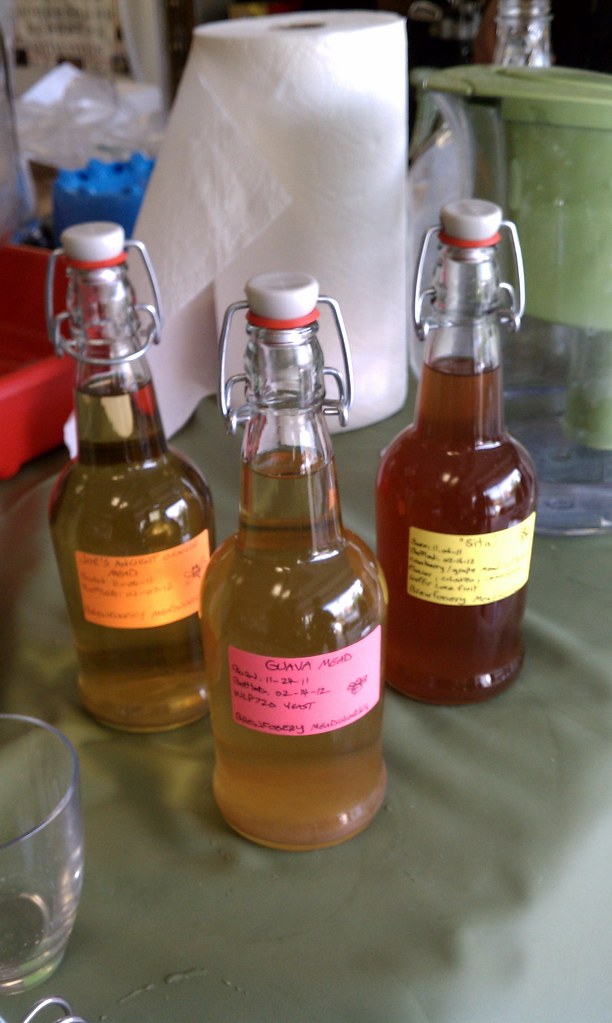 |
| Some of the Meadworks lineup |
 |
| Really fascinating mead |
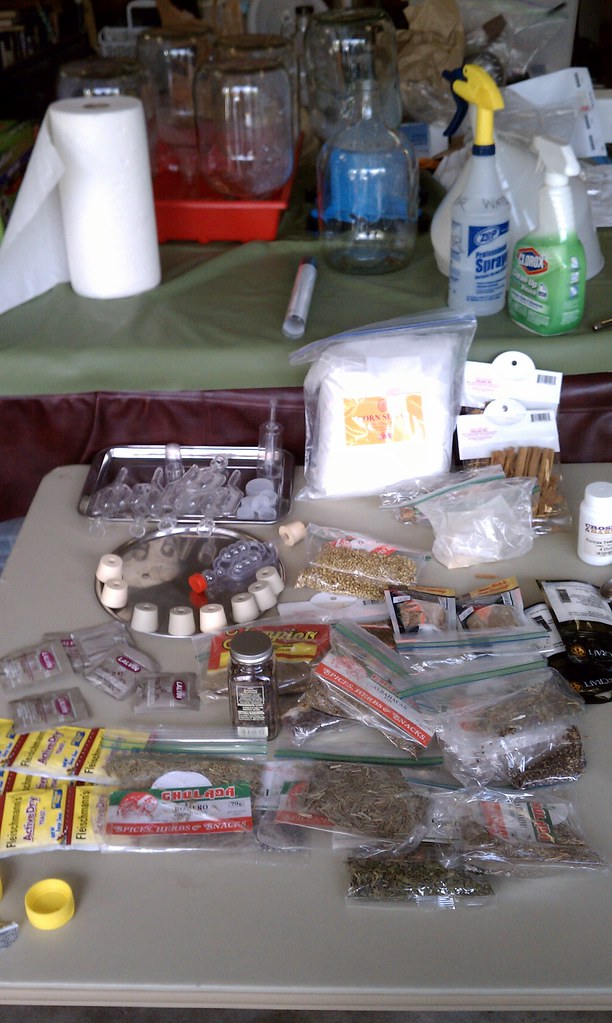 |
| The spice table |
 |
| Adding the honey |
 |
| Smelled fantastic |
 |
| Ready to top off |
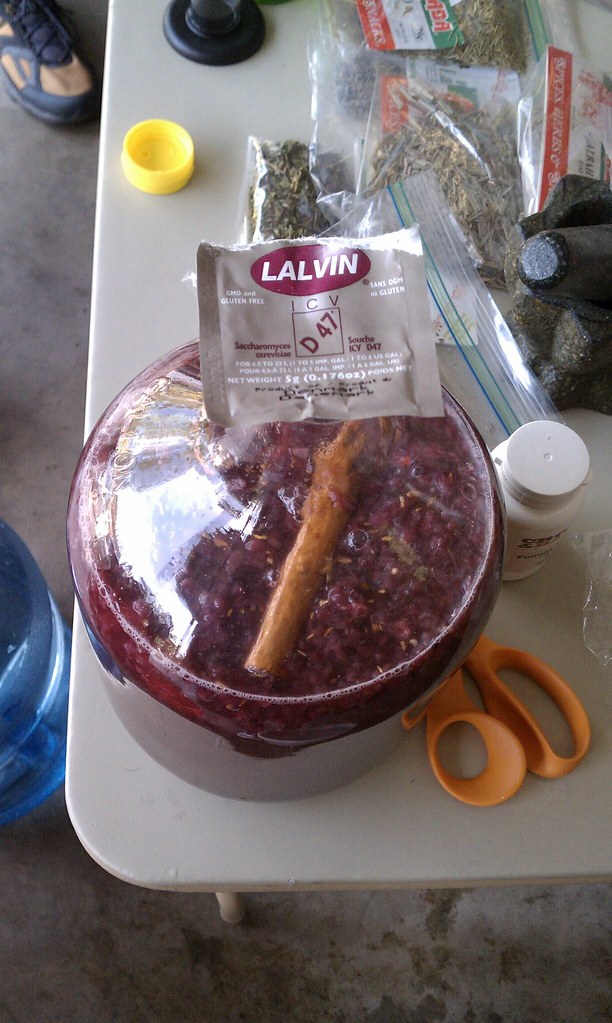 |
| Added some yeast |
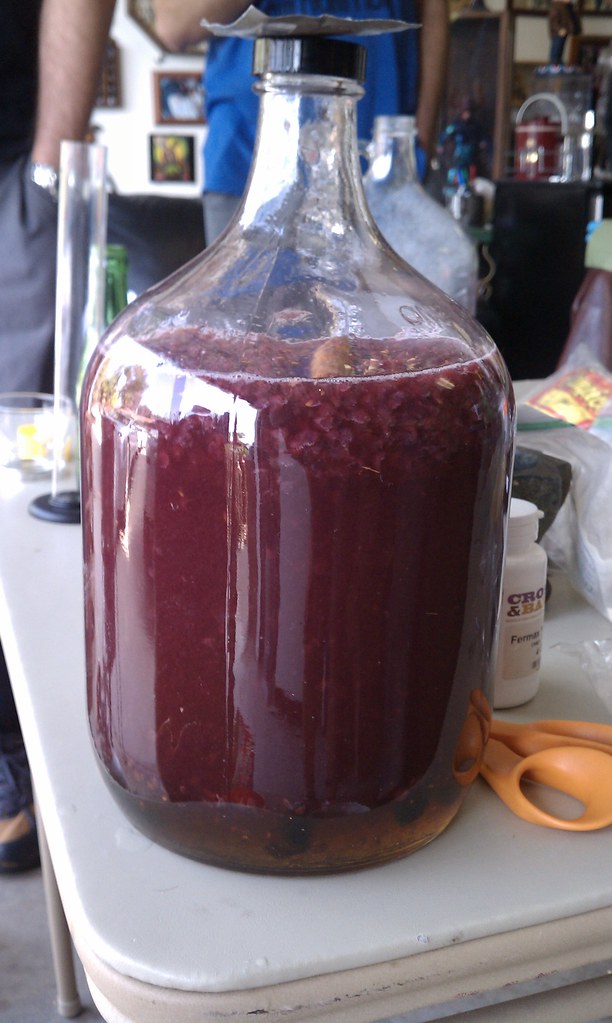 |
| Ready to go |
 |
| Done! |
 |
On the counter at home
Took about 8 hours to get going |
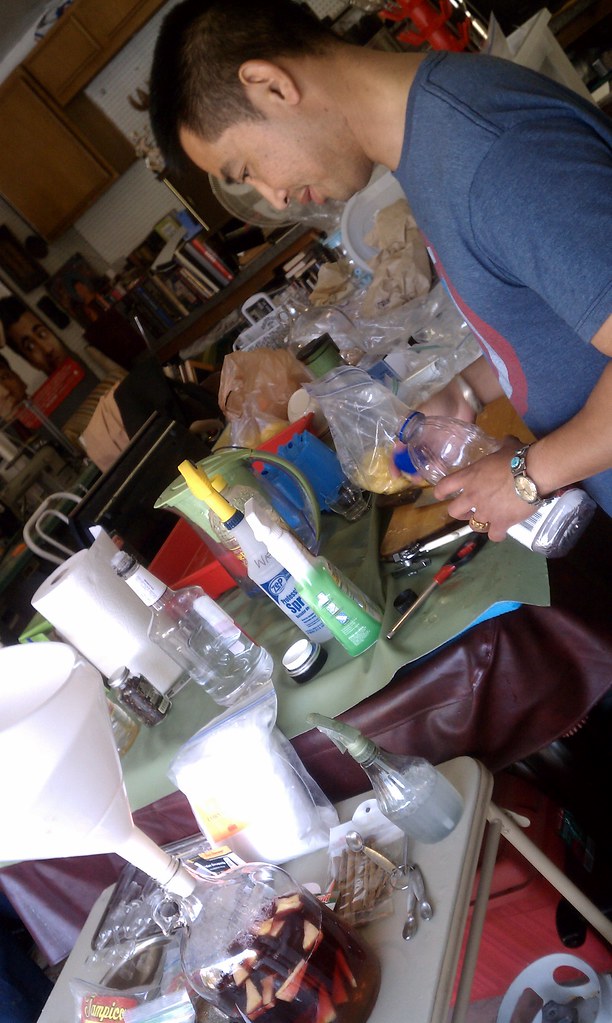 |
We convinced Chad he needed a 17th
mead in production |
 |
| The master in action |
 |
| Took less then 10 minutes |
 |
| Turning average whiskey into great whiskey |
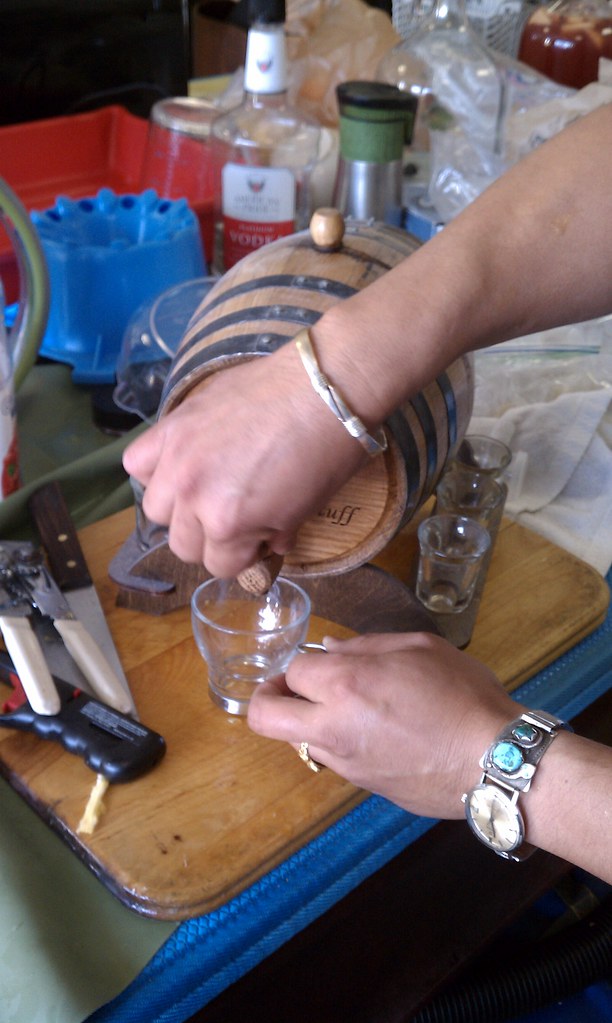 |
| Grabbing a quick sample |




















No comments:
Post a Comment